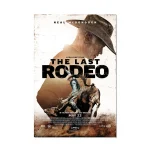Before they set out to make the public believe a man could fly with their Superman films, father-and-sons producing team Alexander, Ilya and Michael Salkind made their mark with a rousing adaptation of a much-filmed literary classic. Released in 1973 and 1974, The Three Musketeers and The Four Musketeers proved to be unexpected hits at the international box office, thanks in large part to the rollicking sensibility director Richard Lester brought to the project. While there’s no shortage of swashbuckling derring-do at play, there’s a sense of light-hearted fun running beneath it that makes the material feel fresh and vibrant.
Filmed back-to-back, the Salkinds’ biggest contribution were their deep pockets, which helped assemble a perfect cast for these productions. Richard Chamberlain, Frank Finlay and Oliver Reed’s differing styles as Aramis, Porthos and Athos, respectively, make for engaging contentious chemistry throughout, while Michael York as D’Artagnan compliments the trio with a deft touch. Charlton Heston and Christopher Lee prove to be worthy foes as Cardinal Richelieu and Rochefort, while Geraldine Chaplin and Faye Dunaway as Queen Anna and Milady are on hand to inject a bit of class to the proceedings. Most surprising is Raquel Welch’s turn as Constance de Bonacieux, the actress displaying a heretofore unseen comic touch. That she was nominated for a Golden Globe for her efforts is no surprise.
And while the films are a delight to watch, they were quite arduous to make. Almost everyone in the cast was injured at one point of another. Reed was stabbed in the hand, Finlay took a two-by-four to the face, Welch sprained her wrist, Lee pulled his shoulder, and York nearly lost an eye. Things got so out of hand York had to stand in for his double who had been severely hurt doing a stunt! While the cast collectively suffered for their art, the results of their efforts contribute to a sense of realism on screen that helps ground the swashbuckling shenanigans.
These behind-the-scenes factoids and so many more are examined in the copious supplements in the Criterion Collection’s edition featuring both films. Included are two documentaries, the first, Two for One made exclusively for this collection, the other, The Saga of the Musketeers from 2002. The Making of The Three Musketeers from 1973 is also present as is an incisive essay by critic Stephanie Zacharek. These features make you appreciate these movies even more and encourage repeat viewings, something Criterion helps facilitate by presenting each film in 4K, ensuring they can be seen in their pristine form.




